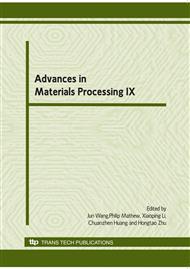p.183
p.189
p.195
p.201
p.207
p.213
p.219
p.227
p.232
Collaborative Aluminum Profile Design to Adaptable Die Process Planning Using Neural Networks
Abstract:
Aluminum extrusion die manufacturing is a critical task for productive improvement and increasing potential of competition in aluminum extrusion industry. It causes to meet the efficiency not only consistent quality but also time and production cost reduction. Die manufacturing consists first of die design and process planning in order to make a die for extruding the customer’s requirement products. The efficiency of die design and process planning are based on the knowledge and experience of die design and die manufacturer experts. This knowledge has been formulated into a computer system called the knowledge-based system. It can be reused to support a new die design and process planning. Such knowledge can be extracted directly from die geometry which is composed of die features. These features are stored in die feature library to be prepared for producing a new die manufacturing. Die geometry is defined according to the characteristics of the profile, is called product data, so we can reuse die features from the previous similar profile design cases. This paper presents the artificial neural network to assist aluminum extrusion die design and process planning based on collaborative design methodology. Product data can be shared and distributed in die design team members via computer network technology. This product data is used to support die design and process planning. Die manufacturing cases in the case library would be retrieved with searching and learning method by neural network for reusing or revising it to build a die design and process planning when a new case is similar with the previous die manufacturing cases. The results of the system are dies design and machining process.
Info:
Periodical:
Pages:
207-212
Citation:
Online since:
June 2010
Authors:
Price:
Сopyright:
© 2010 Trans Tech Publications Ltd. All Rights Reserved
Share:
Citation:


